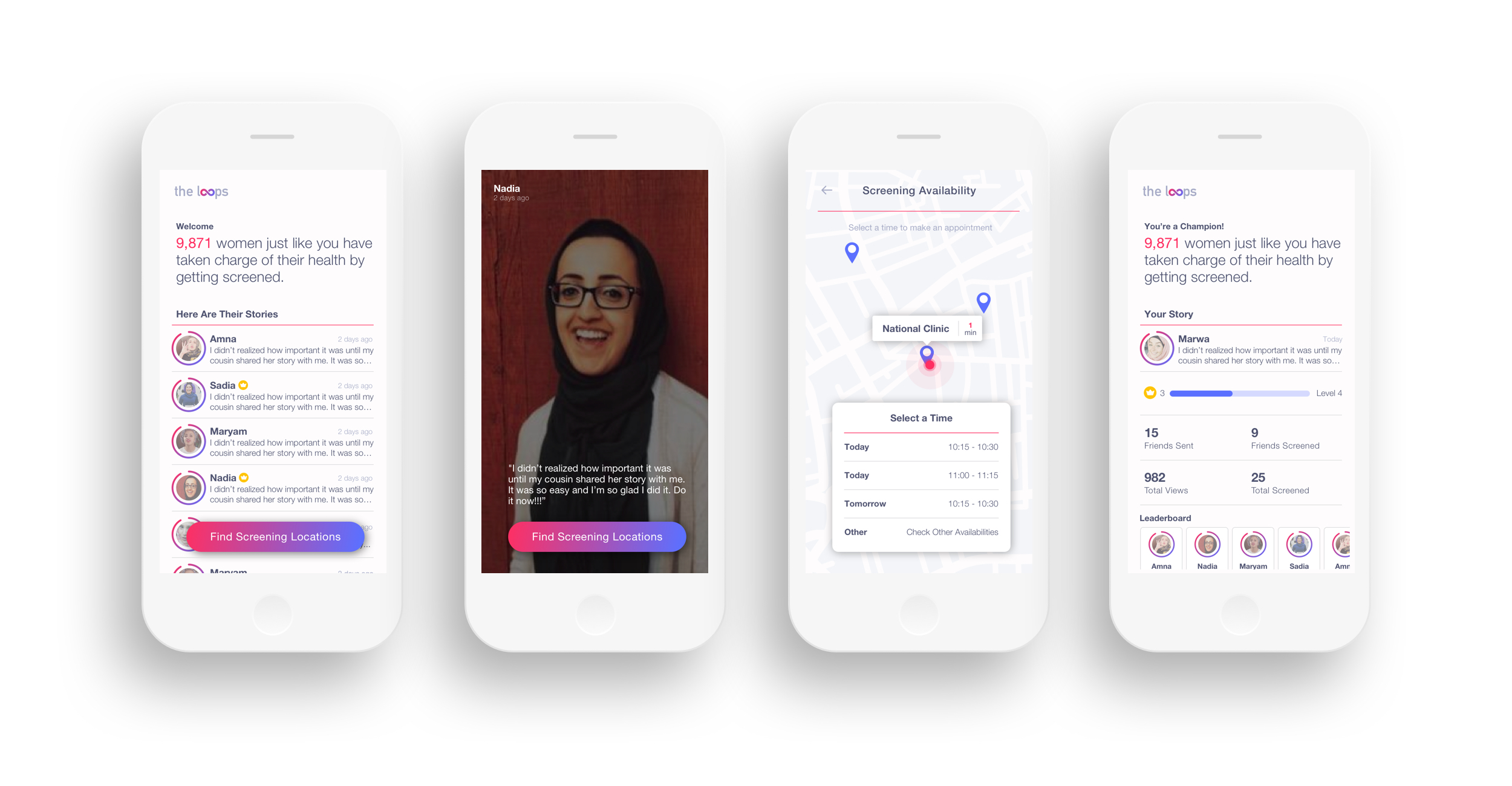Kickoff
Bringing it together
As soon as the typical early hackathon kickoff dust settled, our team didn't have a clear mission or specific goals. We interviewed world-class mentors available to us and conducted experience interviews and secondary research around the area of cancer screening. Given the expertise, we chose to target developing countries like Saudi Arabia who have a tough time raising awareness and adherence of cancer screening. Only

Early Insights
We interviewed medical experts and individuals with analogous experiences. Our goals were to understand the challenges women faced in the awareness and adherence of cervical cancer screening and the mechanisms currently utilized by some.

Stigma causes unease and fear
Women were uneasy and fearful of what they think the invasive procedure entailed. In addition, the sensitivity of the subject created unnecessary social stigma that increased the fear and loneliness.

Awareness doesn't lead to action
Many women are generally aware of the need to get screened, however do not feel motivated or fear taking the step to get screened.

Society playing catch up
The recent rise in cervical cancer meant national institutions are trying to catch up and have no national programs to help raise awareness of the importance of early detection.

Reactive visits to the doctor
Women were less likely to participate in preventive health measures due to the existing healthcare model. Women generally visit for acute conditions. The country is in a transition to primary-care model.
















